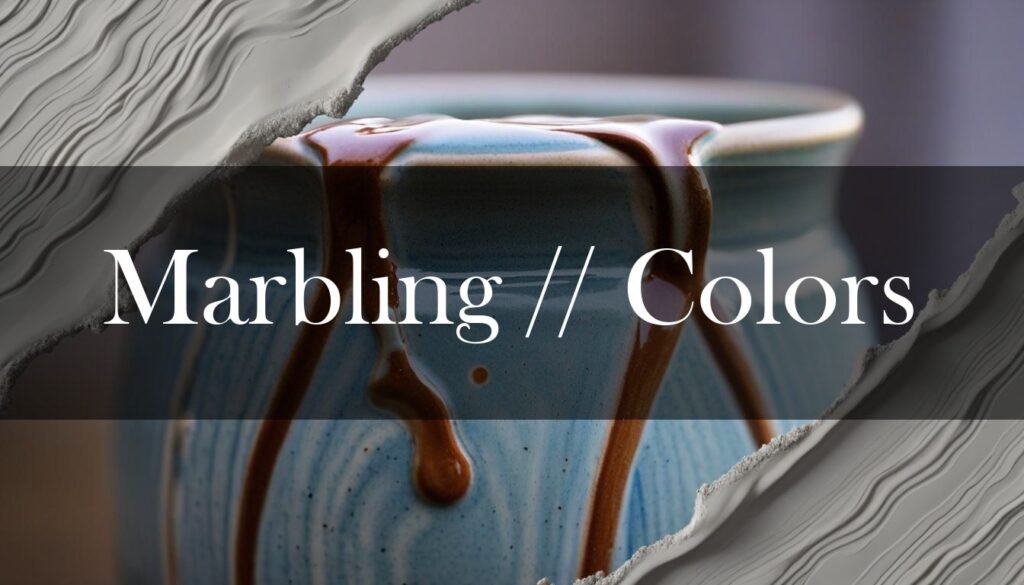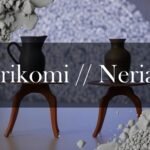Marbling with colored clays is a beautiful way to bring a swirl of artistry to your pottery. The technique involves blending different clay bodies to create unique, marble-like patterns in your ceramic pieces. It’s like capturing the beauty of natural stone and transforming it into functional or decorative art.
One of the most favored clay for marbling is porcelain, celebrated for its fine texture and translucent quality that allows for sharp, contrasting patterns to really pop. Artist Naomi Lindenfeld emphasizes the incredible surfaces you can achieve by mixing contrasting ceramic stains into a white clay body and handbuilding with them, as noted on the Ceramic Arts Network. When adding stains, Lindenfeld suggests using between 8% and 12% Mason stains or 2% to 4% pure oxides to achieve the perfect hue, as also explained in her article. It’s not just about the colors though. It’s super important that the clay bodies you choose have similar firing shrinkage and thermal expansion rates. Digitalfire warns that overlooking this can lead to stresses within the piece, turning it into a “time-bomb.”
Speaking of colors, you can achieve a wide range of effects using metal oxides, ceramic stains, and even natural pigments. Cobalt oxide gives you those intense blues, while chromium oxide brings in greens. Red iron oxide can create earthy reds and browns, and copper carbonate can result in greens, turquoise, or even copper reds in reduction firings, as noted on Wikipedia. Mason Stains are also a fantastic option for consistent colors, with options like Shell Pink and Sky Blue offering specific hues, sold by retailers like Tuckers Pottery Supplies. Don’t forget about natural pigments like yellow ochre and burnt umber for those lovely earth tones, also available at Tucker’s. Each stain has its own properties, so testing is key to finding the right saturation level for your desired effect. Armadillo Clay and Supplies notes that you might only need 2% of Sage Gray but 15% of Titanium Yellow to achieve the same color intensity, according to their article.
“Each stain has its own properties, so testing is key to finding the right saturation level for your desired effect.”
Now, for the fun part: layering and combining the clays. There’s Nerikomi, a Japanese technique that involves stacking colored clay layers and slicing through them to reveal geometric patterns. Faith Rahill describes it as a process where you slice through a cross-section to reveal the pattern, as she writes about on Ceramic Arts Daily. Agateware mimics the look of agate stone by mixing contrasting clay colors. You can also use colored slips, mingling them on the surface of a clay form to create those mesmerizing swirls, as also noted on Britannica. Or try the stack and slam method, where you stack clay slabs and slam them to bond the layers, explained on ThePotteryWheel.com. And for those intricate designs, the Murrini technique involves creating patterned clay rods that are sliced to reveal detailed patterns, much like in glassmaking, as described on Ceramic Arts Network. To avoid cracking or warping, make sure your clays have similar shrinkage rates and moisture content, and wedge them thoroughly to eliminate air pockets. Dry your pieces slowly and evenly, and maintain a consistent wall thickness. Support your pieces during drying and firing to prevent sagging, and use a slow, controlled firing schedule to avoid thermal shock. Also, research has shown that adding emulsion droplets to colloidal suspensions can eliminate cracking during drying, which was discussed on arXiv. You may also consider exploring Nerikomi Neriage, for a deeper dive into colorful clay techniques. Be sure to also look into Agateware for even more marbling magic.
“To avoid cracking or warping, make sure your clays have similar shrinkage rates and moisture content, and wedge them thoroughly to eliminate air pockets.”
Finally, to protect and enhance your marbled masterpiece, consider using sealants or finishes. Mont Marte Clay Varnish Gloss Signature gives a beautiful glossy finish while protecting your piece, which you can find on Confident Stages, and Clay Coat by Mitten Clay Co. is a quartz ceramic sealant that makes unglazed areas waterproof and stain-resistant, sold on Mitten Clay Co. Polish Top Coat Sealer by Clay Imports provides a crystal-clear, scuff-resistant coating that protects the underlying sealer and refreshes the appearance of your piece, available on Clay Imports. Just make sure to clean and dry your pottery before applying any sealant, and follow the manufacturer’s instructions for the best results. With a little practice and attention to detail, you’ll be creating stunning marbled pottery that showcases the beauty of blended clays.





